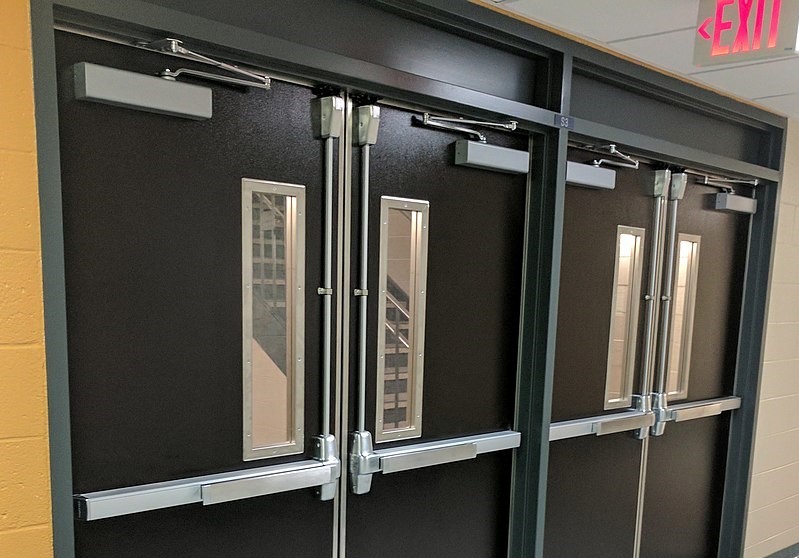In any building or commercial space, exit devices play a crucial role. They are installed as door locks where they’re restricted from the outside but can allow people inside to exit.
Since the early 1900s, exit devices have been around for people’s safety and security within a business premise. Today, they are required for code compliance for certain businesses, and even if not legally required, some commercial property owners consider using them.
There is a wide range of exit device options available in the market. Selecting the right exit device is crucial to people’s life and safety.
Here’s our guide on what you need to know about exit devices.
Exit Devices in a Nutshell
Exit devices fall under panic hardware or fire exit hardware, where they are labeled as such based on certain criteria. Also known as a panic device, panic bolt, touchpad, and crash bar, they are installed in an establishment’s doors to restrict entry yet allow exits in case of emergency.
Let’s take a look at the three models of exit devices, which can be visually differentiated from one another:
- Touch bar: This device is used by pushing the pad into the body, which retracts the latch. It is considered as the most common model among all types.
- Crossbar: This device consists of a bar that extends the door’s width from the latch case to the hinge case.
- Integral device: This device is embedded into the face of the door. For this reason, it does not extend out of the door, unlike other devices.
Three Common Types of Exit Devices
As mentioned, there is a wide selection of exit devices in the market. Let’s explore the three common types before you invest in exit devices and hire a door lock service for their installation:
- Rim device: This type is mostly used at single doors. It consists of a latch, making a strike that is surface mounted to the soffit of the frame.
- Mortise device: This type is a heavy-duty device that has a mortise lock body sitting inside a pocket prepped in the side of the door.
- Vertical rod device: This type is mostly used in double doors but may be used for single doors as well. It has top and bottom rods that extend to the top and bottom of the doorframe.
Main Benefits of Exit Devices
If you’re wondering why there’s a need to install exit devices, consider the following valuable information below:
- Security: An exit device restricts entry yet allows exit. This means that only authorized personnel is permitted to get into the building, which is vital to keep your employees, customers, and property assets safe from intruders.
- Safety: While authorized employees or clients are allowed inside the building, allowing them to exit in case of emergency is important. Should there be a fire outbreak, for instance, they can easily evacuate through the doors with exit devices.
Conclusion
Overall, exit devices play a critical part in upholding people’s safety and security inside your building. Consider what we discussed above when choosing an exit device for your property.
Looking for various types of exit devices for your building? We are your locksmith in Cincinnati, OH. we have wide selection – we stock a wide selection of exit devices and exit device parts for repair. Get in touch with us today!

